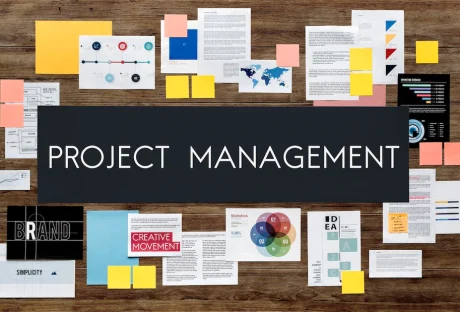Category: Business
ContentRally is a leading source of reliable news and trending topics on Business. Get hard-to-find insights and advice on Business from industry-specific leaders.

Everything You Need To Know About Myga’s
People are increasingly looking for safe and dependable investment solutions that will offer a consistent stream of income for their future in the uncertain financial environment of today. Multi-Year Guaranteed Annuities (MYGAs), which combine safety, flexibility, and guaranteed returns, have become a popular option. At $24.7 billion in 2022, annuity sales are continuously on the rise, making them worthwhile to consider for your own portfolio. This guide will offer an in-depth examination of MYGA's, covering their characteristics, advantages, factors to take into account, and how they fit into a complete financial plan. An Introduction to MYGAs Insurance firms issue fixed annuity contracts known as Multi-Year Guaranteed Annuities (MYGAs). They promise a particular interest rate for a predetermined amount of time, usually between three and ten years. MYGA's, as opposed to variable annuities, provide a fixed rate of return, protecting investors against market turbulence. You get into a contract with an insurance provider when you buy a MYGA. Either a one-time payment in full or a certain number of periodic premium contributions is acceptable. For the term of the contract, the insurance provider guarantees both the principal sum and a set interest rate. You will have the option of either receiving a lump sum payment or annuitizing the accrued money at the conclusion of the contract term. Setting MYGAs Apart From Other Types of Annuities Because of their fixed interest rates and guaranteed returns, MYGAs differ from other annuity types, including variable annuities and fixed annuities. Fixed annuities offer a fixed interest rate but lack the flexibility in contract periods offered by MYGA, whereas variable annuities are dependent on investment performance and expose investors to market risk. Advantages of MYGAs Principal and Interest Guarantees: One of the main benefits of MYGA's is the assurance of both the principal and the interest accrued. The insurance provider makes sure that your money is secure and will make guaranteed returns regardless of market conditions. Particularly for individuals who place a high priority on capital preservation, this offers stability and peace of mind. Tax-Deferred Growth: MYGAs provide tax-deferred growth, which means that taxes are not due on interest earned until the money is withdrawn. As a result, the money that would have been set aside for taxes can continue to compound, allowing your investment to increase more quickly over time. For people in higher tax brackets, tax deferral can be especially advantageous because it may result in tax savings. Flexibility in Terms and Payout Options: MYGAs give you the option to select a contract duration that is in line with your investment objectives. There are options available, whether you desire shorter-term MYGAs for more urgent income demands or longer-term MYGAs for sustained growth. You also have options for how you want to receive the dividend: either a lump sum payment or recurring income installments spread out over a predetermined time. Things to Consider Before Investing in MYGAs Minimal Initial Investment: The minimal initial investment for MYGAs varies based on the insurance provider and the particular product. Analyzing your financial situation is crucial in order to choose an acceptable investment amount. Before agreeing to a MYGA, take into account variables including your risk tolerance, financial objectives, and cash flow availability. Surrender Periods and Penalties: MYGAs frequently have surrender periods, during which you can incur fees or penalties if you withdraw money before the contract's term is out. Depending on the specifics of the contract, the surrender periods and penalties can range from a few years to a decade. It's important to comprehend the surrender provisions because they affect your liquidity and ability to retrieve the invested cash. Interest Rates and Inflation Protection: Though MYGAs provide interest rates that are guaranteed, it's necessary to take into account current market rates and potential inflation. Your financial objectives should be in line with the interest rate provided by the MYGA, which should also offer a competitive return. Moreover, to make sure that your investment keeps up with rising living expenses, you might want to look for MYGAs that include inflation protection features. Assessing MYGA Suppliers and Products It's crucial to take the insurance company's financial health and ratings into account when choosing a MYGA provider. Choose respectable businesses that have received excellent ratings from independent rating institutions. By doing this, you can be sure that both your investment and the insurance company's capacity to fulfill its commitments are secure and stable. Before choosing an insurance company, compare the interest rates they are willing to provide. Remember that interest rates might change depending on the contract's term and the state of the market. Look for MYGAs that offer reasonable rates in the market, taking into account both the current rates and the insurance company's past performance. Some MYGA products provide extra features and riders that might improve the annuity contract. These could consist of income acceleration options, inflation protection, or death benefit riders. Check to see if these extra features fit with your financial goals by evaluating them. Consider the trade-offs and their applicability to your particular demands while keeping in mind that greater functionality can come at an additional expense. What Role Do MYGAs Play in a Comprehensive Financial Plan? MYGAs can be quite helpful in determining one's retirement income. They offer security and assurance during retirement by offering a guaranteed income source. MYGAs offer a stable cash flow to cover necessary expenses and can be used as a supplement to other retirement income sources, such as Social Security or pension payments. Because they are guaranteed, MYGAs are frequently seen as conservative investments. They can be a useful tool for investors who place a high priority on capital preservation while balancing risk in their investment portfolio. You can protect a portion of your capital while pursuing higher-risk investments in other asset classes by devoting a portion of your investment portfolio to MYGAs. MYGAs can be included in a portfolio of investments that is both diversified and includes other assets, including stocks, bonds, and real estate. Diversification lessens exposure to the performance of any one asset class by distributing risk and possible rewards among other investment types. You may be able to attain a better balanced risk-reward profile and improve portfolio stability by incorporating MYGAs into a comprehensive financial plan. Final Thoughts For those looking to invest in a safe and predictable source of income for the future, Multi-Year Guaranteed Annuities (MYGAs) are an excellent alternative. MYGAs offer a number of advantages, including guaranteed principal and interest, tax-deferred growth, and flexible payout possibilities. Before making an investment in MYGAs, it is essential to carefully analyze variables such as the original investment amount, surrender terms, and interest rates. People can take advantage of the benefits of MYGAs to reach their long-term financial goals by analyzing MYGA providers, comprehending their products, and incorporating them into a thorough financial plan. Always remember to work with a financial advisor to customize MYGAs to your unique situation and make sure they complement your entire investment plan. Read Also: How To Easily Sell Your Life Insurance Policy How To Know If Your Health Insurance Covers Visits To The Chiropractor The Average Price Of Car Insurance In New York – What You Can Expect To Spend!
READ MOREDetails
Entering The Real Estate Market For Beginners: A Guide To Navigating The World Of Property Investment
The real estate market, for long, remained a lucrative investment opportunity, attracting individuals from all walks of life. Whether you're looking to build wealth, trigger passive income, or increase the value of your investment portfolio, the realty sector offers a multitude of benefits. However, stepping into the world of property investment can be intimidating for beginners. With careful planning, research, and guidance, you can navigate the real estate industry and set yourself up for success. Define Your Goals and Strategy Before diving into the real estate sector, it's essential to define your goals and investment strategy. Are you in search of long-term rental income, fix-and-flip opportunities, or perhaps an amalgamation of both? Determining your goals as well as strategies helps you in shaping your investment approach and guides your decision-making process. Enlighten Yourself Investing in real estate requires a solid understanding of market dynamics, financing options, property valuation, and legal regulations. Enlighten yourself by reading books, attending seminars, and following reputable real estate blogs. Building a knowledge base will boost your confidence and assist you in making informed decisions. Establish a Budget One of the crucial steps in entering the realty market is establishing a budget. Take note of your financial budget and identify how much you can actually afford to make real estate investments. Consider factors such as value-adds, down payments, closing costs, property management fees, and potential repairs or renovations. It's crucial to have a clear picture of your financial limitations and avoid overextending yourself. Research Local Markets Real estate markets can vary significantly from one location to another. Research local markets to identify areas with strong growth potential, rental demand, and favorable investment conditions. Analyze factors such as population trends, job growth, infrastructure development, and proximity to amenities. Familiarize yourself with market cycles to determine the optimal time to buy or sell properties. Build a Network of Professionals Having a reliable team of professionals is vital for success in real estate. Seek out a property agent who specializes in investment properties, a mortgage broker who can help you secure financing, and a property inspector to assess the condition of potential purchases. Building relationships with these professionals will provide you with valuable insights and guidance throughout your real estate journey. Secure Financing Unless you have substantial cash reserves, you'll likely need financing to enter the real estate market. Explore different financing options, such as conventional mortgages, Federal Housing Administration (FHA) loans, or private lenders. Take the time to compare interest rates, terms, and eligibility criteria to find the most suitable financing option for your investment strategy. Start Small and Diversify For beginners, it's often advisable to start with a smaller investment property. This approach allows you to gain experience, understand the intricacies of property management, and minimize potential risks. As you become more comfortable, consider diversifying your portfolio by investing in different types of properties, such as residential, commercial, or multi-unit buildings. Diversification can provide stability and mitigate the impact of market fluctuations. Conduct Due Diligence Thoroughly evaluate any property before making a purchase. Conduct inspections, review financial statements, analyze rental income potential, and research the property's history. Understanding the property's condition, potential expenses, and income-generating capabilities will help you make an informed decision and avoid costly mistakes. Develop a Long-Term Mindset Real estate investment is typically a long-term endeavor. While there may be opportunities for quick profits through fix-and-flip strategies, a sustainable and profitable real estate portfolio is built over time. Adopt a long-term mindset and be patient with your investments. Focus on acquiring properties with strong fundamentals and the potential for appreciation and cash flow. Continuously Learn and Adapt The real estate industry is dynamic and ever-changing. Stay updated on market trends, new regulations, and industry innovations. Continuously aware of yourself and be willing to adapt your investment strategy as needed. Embrace the learning process and seek opportunities for growth and improvement. Entering the real estate industry as a beginner can be an exciting and rewarding journey. With careful planning, research, and a commitment to learning, you can build a successful real estate portfolio. Remember, patience and persistence are key, and always seek professional advice when needed. Read Also: Property Valuation Software for Real Estate Appraisals 4 Mistakes New Rental Property Owners Must Avoid Benefits of Investing in City Centre Property
READ MOREDetails
Here’s How We Buy Houses Companies Work
In the dynamic world of real estate, "We Buy Houses" companies have become a notable trend. These businesses offer a quick, hassle-free alternative to traditional home-selling methods by buying homes for cash. Ideal for homeowners facing financial struggles, relocation, or foreclosure, or those who wish to avoid the usual complications of home sales, these companies provide a convenient solution. This blog article examines how these companies work, who can gain from their services, and important factors to remember when deciding to use them. Understanding "We Buy Houses" Companies "We Buy Houses" companies, also known as cash-for-home businesses, offer a unique alternative to traditional real estate selling methods. These companies make direct cash offers, allowing homeowners to sell their properties quickly and without the usual hassles of listing, staging, and waiting for a suitable buyer. This model is especially beneficial for homeowners needing to sell urgently, perhaps due to financial issues, relocation, or foreclosure avoidance. After purchasing, these companies refurbish the homes and sell them for a profit on the open market. While they typically offer below market value—accounting for repair costs and risk—their speed and convenience can make this a worthwhile option for many homeowners. Companies that purchase houses for cash function by acquiring properties regardless of condition. This way, homeowners are saved from the hassle of repairs or renovations. Following the acquisition, these companies invest in upgrades before reselling the property at a price. While this approach provides homeowners with a fast and convenient selling experience, these companies often offer less than the market value. This reduced price accounts for the expenses associated with repairs, the risks they undertake, and the expedited sale process. Despite receiving smaller returns, homeowners often find the speed and convenience appealing enough to consider it a valuable trade-off. The Operational Process Of Cash-For-Home Companies As mentioned earlier, "We Buy Houses" companies purchase homes in any condition, which means homeowners do not need to worry about repairs or renovations. After the purchase, they invest in necessary upgrades and resell the property for a profit. This strategy offers homeowners a quick and convenient selling process, but it's important to mention that these companies may offer less than the market value. However, this reduced price reflects the cost of repairs, the risk undertaken by the company, and the accelerated sale process. Despite the potentially lower returns, many homeowners appreciate the speed and convenience enough to consider it a worthy trade-off. Following the offer from the buyer, the homeowner can now accept or decline. If the offer is accepted, the sale can advance swiftly without being burdened by mortgage financing requirements. The company manages most sales process aspects, including closing costs and paperwork. The absence of mortgage approval speeds up the process, often enabling the completion of the sale in a relatively short period. Weighing The Pros And Cons Selling to a “We Buy Houses” company can be advantageous if you need to sell your North Carolina home for cash quickly, it lacks the resources for necessary repairs, or if your house isn’t attracting interest on the open market. However, it’s important to note that these companies can offer less than market value for homes because they account for the costs of renovations and the risk they take on by purchasing a house as is. Finding Reputable Companies To Buy Your Home For Cash To locate a reputable cash-for-home company, begin by conducting an online search for local companies. Seek out companies with informative websites that clearly outline their processes and services. Additionally, a well-established company will prominently display their contact details. Choosing a local company is advantageous as they possess a comprehensive understanding of the local real estate market, which can lead to more accurate offers. In addition to visiting the websites of various local businesses, consider multiple sources such as their website, customer reviews, testimonials, social media, and independent review sites. Positive feedback indicates reliability and good customer service. It's advisable to check if the company is accredited by recognized real estate organizations or business bureaus. Transparency is a hallmark of reputable companies. Wrap-Up: Selling Your Home For Cash Can Give You Quick Peace Of Mind When considering using the services of "We Buy Houses" companies, it is important to understand how they operate and their potential impact on certain homeowners. Such companies can provide a useful service for homeowners needing to sell quickly or those unable to afford repair or staging costs. However, due to their below-market rates, homeowners may not realize as much from their property as they would through a conventional real estate sale. Before committing to any choice of this magnitude, evaluating the advantages and disadvantages and exploring various options is a sensible approach. Read Also: 6 Expert Tips on How to Sell Your Own Home Fast Choosing a Mortgage Broker for Your Home Loan Application
READ MOREDetails
Addressing Supply Chain Challenges For Medical Consumables In Developing Countries Through Precision Injection Molding
This article explores the significance of precision injection molding in addressing supply chain challenges for medical consumables in developing countries. With a focus on the capabilities of plastic injection molding companies, we highlight how precision injection molding empowers these nations to overcome barriers and ensure the timely availability of essential medical supplies. Precision Injection Molding: Transforming Supply Chain Efficiency Precision injection molding, a state-of-the-art manufacturing process, plays a vital role in improving supply chain efficiency for medical consumables in developing countries. By leveraging advanced technologies and techniques, plastic injection molding companies can produce high-quality and customized medical supplies with precision, consistency, and speed. Empowering Local Production and Accessibility The adoption of precision injection molding enables developing countries to set up local production facilities for medical consumables. This strategic shift reduces dependence on imports, ensures a steady supply of essential items, and significantly shortens delivery times, particularly in emergency situations. Plastic injection molding companies collaborate with local partners, sharing expertise and providing access to cutting-edge machinery and molds to boost local production capabilities. Enhancing Quality Control and Safety Standards Precision injection molding technology offers unprecedented control over the production process, enabling strict adherence to quality control and safety standards. This ensures that medical consumables manufactured in developing countries meet international regulations and guidelines. With plastic injection molding companies providing the necessary know-how, developing nations can effectively address concerns related to inferior or counterfeit products, enhancing patient safety and improving healthcare outcomes. Cost-Effectiveness and Sustainable Manufacturing Precision injection molding presents a cost-effective solution for medical consumables in developing countries. By leveraging economies of scale and local production, manufacturing costs can be significantly reduced, leading to affordable prices for essential medical supplies. Moreover, precision injection molding allows for the use of recyclable and sustainable materials, promoting environmental responsibility and sustainability in the healthcare sector. Promoting Local Job Opportunities and Economic Growth The establishment of local precision injection molding facilities in developing countries offers economic opportunities by creating jobs and boosting the domestic economy. Plastic injection molding companies, alongside government and industry collaborations, help train local talent, providing technical expertise and assistance in establishing high-quality manufacturing practices. This enhances the skill set of the local workforce, driving economic growth and promoting the long-term sustainability of the healthcare sector. The Road Ahead: Overcoming Challenges and Building Resilience While precision injection molding presents numerous advantages, specific challenges must be addressed to ensure its effective implementation in developing countries. These challenges include limited access to advanced technology, lack of infrastructure, and the need for significant investment. However, by fostering international partnerships, knowledge sharing, and targeted investments, plastic injection molding companies and relevant stakeholders can collectively build resilient supply chains that meet the medical consumables needs of developing nations. Conclusion Precision injection moulding has the potential to revolutionize the supply chain for medical consumables in developing countries. By enabling local production, enhancing quality control, promoting cost-effectiveness, and creating job opportunities, plastic injection molding company are instrumental in overcoming supply chain challenges and improving healthcare delivery. With ongoing support, collaboration, and investment, precision injection molding can pave the way for enhanced accessibility, affordability, and sustainability of medical consumables in developing nations, ensuring improved healthcare outcomes for all. Read Also: Tips For Protecting Your Overseas Shipments Role of supply chain management in business Simplify Parts Pricing With A Comprehensive Solution
READ MOREDetails
Getting The Most Out Of Your Email Campaigns By Getting The Audit Right!
Excerpt: Delivering email campaigns that perform exceedingly well requires effort and email audits help you get closer to better ROIs. Read on! So half of the year has gone by smoothly (well, almost), your brand’s making money, your workflows are automated, and your email marketing campaigns are doing well. Wait, yes, pause at the last part of the sentence. Are they really performing optimally? To get a clear understanding of the efficacy of your email marketing campaigns, no matter how great and well-automated they might be in your perspective, you NEED to run audits twice or thrice every twelve months. If you meet an email marketer over drinks, they will probably have a lot to say about their KPIs and how the click-throughs are not making the cut. So how can one ensure that their email marketing efforts don’t go down the drain? The answer is quite simple indeed: execute email marketing audits to unveil your strengths and weaknesses, areas of improvement, and those that are doing just fine. In the blog that follows, we will delve into the different kinds of email marketing audits that one can conduct and ways to go about executing them. Let’s get cracking! The Kinds of Email Marketing Audits That One Can Conduct In simple terms, an email marketing audit is a deep analysis of the various factors that contribute to the success of an email campaign so that you know what’s working and the areas that need to be tweaked. The following are some kinds of email audits that you can carry out; each of them focuses on different facets of the email. 1. Email Content & Design Marketing Performance Audit One of the most common kinds of audits, here you delve into your various KPIs (CTR, CTOR, etc.) to get a holistic understanding of the email campaign’s performance. The aspects that you need to look out for are: Subject line: Try to keep them personalized, crystal clear, non-sales, and within the range of 40-45 characters, optimized for mobile viewing. Please steer clear of spammy words such as “earn quick money” or basically anything that sounds too good to be true. Preheader text: It should be related to the subject line, albeit not repetitive. Header: First impressions are often long-lasting; cliched though that may sound, it does hold some weight. The header text next to your logo should be noticeable, clear, and in alignment with the brand ethos. Email copy: Grammatical errors and typos are a major turn-off. No wonder brands invest in the best copywriters to churn out good copy, even in the age of AI! Keep it crisp, clean and deliver maximum value in minimum words. CTA: The Call to Action buttons are the ones that can make or break the ROIs. Keep the design and text in tandem with the brand guidelines, easy to spot and click, devoid of broken links that lead nowhere! Graphics: When crafting an HTML or interactive email, ensure that the graphics render well across devices and the visual hierarchy is maintained. Conversions & Engagement rates: This is the litmus test of your email campaign. Are your emails good and engaging enough to keep subscribers interested, or are there more hits than misses? The KPIs should spill the beans on this one. 2. Email accessibility audit When crafting your emails, if one overlooks the critical aspect of disability, you might fail to foster inclusivity with your campaigns, thereby risking losing the patronage of your subscribers. Keeping email accessibility in mind is absolutely essential, and is something that all email marketers should perpetually strive for. Ensure that there is no sensory overload for those with visual disabilities by keeping a simple and clean email layout. For those living with tactile difficulties, make the CTA buttons larger to ensure greater clickability and visibility across a range of devices. Remember to check for alt text in images to simplify things for users deploying the services of a screen reader. 3. Deliverability Audit You might have the best of Salesforce email templates (or Hubspot; whatever rocks your boat) and check all the above aspects, but if your email campaigns fail to reach the intended inboxes, all your efforts will end up in vain. To check for email deliverability issues, one needs to check the following aspects; Clean email list devoid of incorrect email ids Email Authentication HTML code failures Domain reputation Blocklisting Spam traps IP address 4. Compliance Audit This would include checking the level of compliance of your email campaigns with the guidelines and requirements of CCPA, GDPR, PECR, etc. 5. Email Code Audit Here, one would evaluate and carry out a code clean-up, fix bugs (if any), and ensure the incorporation of the best practices in email coding. One would also conduct tests to see how well the email renders across different email clients and devices. 6. Design Audit In this kind of audit, one would review the emails from the design and aesthetics viewpoint and check how consistent the layout is with the branding guidelines. The different elements one would generally bring under the lens in this kind of audit are checking for the right use of white spaces, design patterns in accordance with the heat map, fonts, logo, layout, graphics, etc. 7. Automation Audit Here, one would check automated email campaigns to see if everything is in order, such as API triggers, templates, links, rules, customer journey maps, etc. One can either carry out all these audits or create a bespoke audit plan that includes permutations and combinations of the different kinds of audits mentioned above. Steps For Conducting The Perfect Email Audit Now that we are privy to the kinds of email audits that one can carry out, let’s move over to getting started with the process of what’s going well and what’s lacking in your current email campaigns. Firstly, you need to begin with drafting a clear set of goals. Much like in other areas of life, the lack of well-defined goals in sight can very well be akin to sailing in a rudderless ship, and frankly, no one wants to be aboard such a ship! You could begin by jotting down the kinds of audits you’d want to run on your existing campaigns and, based on the purpose of the audit, figure out your bespoke learnings and takeaways. Then, you’d like to create a list of measurable Key Performance Indicators (KPIs) that you will be evaluating to check the health and effectiveness of your current campaign. These may include: Unsubscribe rates Open rates (albeit not a very effective one as per Apple’s Mail Privacy Protection feature unveiled in the WWDC conference held on 7 June 2021) CTR (Click Through Rates) CTOR (Click To Open Rate) Spam complaints Conversions Email client & device assessment You can create a spreadsheet to maintain a record of your audit. Here’s what you can document: Name of the email campaign Date deployed (not applicable in case of automated emails) Name of the audience segment Subject line Soft bounce rate Hard bounce rate CTOR CTR Conversion rate Unsubscribe rate You can modify the contents of the spreadsheet as per your unique requirements. One can also diversify the main spreadsheet by adding tabs for different kinds of emails, such as promotional, transactional emails, etc. Once you have your data in place, you can and should proceed with the data analysis. Begin with scanning all the metrics and specifically scrutinize those that fall on the extremities of the curve. The ones that did really well and the ones that missed the mark. Proceed with asking yourself the following questions, Are the subject lines and preheader texts enticing enough? Will I click on them if I receive them in my inbox? Is the visual hierarchy of the email in place, or does it look too cluttered? Does it offer a personalized experience to the subscriber? Does the email copy offer value to the reader, or does it appear too salesy? Does it cater to specific buyer personas and age demographic, or does it appear mass-produced with no specific target audience in mind? Is the cadence too annoying for the subscribers leading to higher unsubscribe requests? Are the CTAs visible, quirky, and enticing enough to get users to click on them? Are your emails accessible to users across the entire spectrum? Wrapping It Up While there are a number of tools available in the market to help you conduct email audits, and you can always request colleagues for a fresh eye perspective on your campaigns, if you’d rather have experts analyze the game for you, that’s possible too! Email Uplers will not only help you analyze your existing campaigns but also deliver interactive emails from scratch attuned to your specific needs. Do drop by for more information! Read Also: Should You Consider Outsourcing Your Brand’s Marketing Campaign? Your Ultimate Guide To Creating SMS Marketing Campaigns Content Marketing Campaign Strategy For Small Business
READ MOREDetails
Why You Should Consider Purchasing A Memorial Tree
When you need that unique gift for a graceful show of support to comfort a loved one in need, it can be difficult to find just the right option. A hasty choice can inadvertently send the wrong message, and the most common option will likely get lost in the crowd. It often takes thought and compassion to find just the right choice for the occasion at hand. If this is the position you find yourself in, consider purchasing a memorial tree as a special tribute. Comforting someone through the bereavement process is not easy. While you can find yourself at a loss for words, it can be even more difficult to know what to do during these trying times. You want to offer solace while celebrating the beautiful life that meant so much to others. The bereavement process can be one of the most difficult experiences to endure, and the comfort of those close can often help start the healing process. Purchasing a memorial tree can be a graceful gift of compassion that pays tribute to the memory of someone special for years to come. Here's why you should consider purchasing a live tree as a memorial tribute. A Tangible Symbol of Life The loss of a loved one can often leave people feeling anguished and confused as they try to deal with their grief. Trees are a tangible symbol of life, with their budding leaves and strong roots reaching deep into the earth. The symbolism is not lost on the grieving. The tree’s parallel rebirth often offers comfort and solace to those remembering the life of someone special. Planting a special tree in honor of their loved one’s memory can help start the healing process as they imagine that tree living in nature for many years. The beauty and simplicity of nature can help alleviate the pain associated with the grieving process. Trees support life. They offer wildlife the fundamental elements needed for survival, release oxygen and support the delicate balance of the surrounding ecosystem. Planting a tree in someone’s memory is an elegant tribute that people can enjoy and take comfort in, knowing that it will be there for future generations. Support the Environment Planting a tree in memory of someone is a fantastic way to support the environment. Memorial trees are often planted in a National Park or Forest that has been decimated by fires or natural disasters. Not only are they naturally protected by the nature of where they are planted, but they also help replenish the environment and natural forest habitat. Trees help rid the environment of hazardous toxins while releasing the vital oxygen we all need for survival. They also help replenish the soil of vital nutrients that is often stripped during these natural disasters. There is no better way to offer comfort and solace in someone’s memory than by replenishing the natural resources that are so desperately needed. It takes nearly 250 trees to replenish a single acre of forest land. Not only are you revitalizing the earth’s natural resources, but you’ll also be helping to reduce a large carbon footprint. Traditional sympathy cards and flowers are not the greenest options available, especially once you calculate delivery. They may offer temporary comfort, but they do not last very long. A Living Tribute A memorial tree makes a living tribute to the memory of someone special. Trees can live for hundreds of years. There is some comfort in knowing that the special tree that offered solace and comfort today will be around for many future generations to enjoy. It makes a beautiful permanent reminder of the loved one whose life was so special and had such a profound effect on those around them. Planting a tree in honor of a loved one lost represents a kind act of compassion that can help soothe mourners. You pay tribute to their life by translating their memory into something beautiful and tangible that can be enjoyed by others. Planting a tree is like a living tribute that represents beauty and strength to the rest of the world. Consider Purchasing a Memorial Tree Today Comprehending and navigating loss can be difficult. Sympathy cards and flowers are temporary, and they eventually serve as a difficult reminder of the loss already suffered. Planting a tree in memory of someone is a tasteful way to offer a tangible symbol of life that can help start the healing process. It also helps support the environment while offering a living tribute to that person’s special memory. This graceful act of compassion and kindness is a tasteful way to offer solace and comfort to those enduring the pain of the grieving process. Consider purchasing your memorial tree today. Read Also: Business Insurance Covering Tree Trimmers: Insurance Policies You Need To Know How to Safely Prune Your Trees How To Style Streetwear Hoodies?
READ MOREDetails
Creating A Welcoming Entrance: Ideas For Decorating Your Front Porch Or Entryway
Your front porch or entryway is the first impression visitors have of your home. It sets the tone for what's inside and leaves a lasting impression. One great way to enhance the beauty and welcoming vibe of your entrance is through creative decoration. Choose the Right Artificial Plants Manufacturers: Quality and Realism When selecting artificial plants for your front porch or entryway, it's important to choose the right manufacturers that offer quality and realism. Look for manufacturers that use high-quality materials and techniques to create plants that look lifelike. It's essential to ensure that the artificial plants are UV-resistant, fade-resistant, and suitable for outdoor use. By choosing reputable artificial plant manufacturers, you can trust that the plants will withstand the elements and maintain their beauty for years to come. Create Height and Layers: Use Potted Plants and Plant Stands To add visual interest and dimension to your front porch or entryway, incorporate potted plants and plant stands. Use taller potted plants to create height and frame your entrance. Choose a variety of plant sizes, textures, and colors to create layers and depth. Utilize plant stands to elevate certain plants and create a more dynamic display. By utilizing potted plants and plant stands, you can create a lush and inviting ambiance right at your front door. Incorporate Hanging Baskets: Vertical Beauty Another great way to decorate your front porch or entryway is by incorporating hanging baskets. Hang these baskets from the ceiling or porch beams to add a vertical element to your decor. Choose trailing plants, such as ivy or Boston ferns, that will cascade down and create a stunning visual effect. Hanging baskets not only add beauty but also make the most of limited space, allowing you to maximize the potential of your front porch or entryway. Consider Doorway Accents: Wreaths and Swags Adding decorative accents to your front door can instantly elevate your entrance's appeal. Consider incorporating door wreaths or swags made from artificial plants. Choose designs that complement your home's exterior and personal style. Opt for wreaths with vibrant blooms or swags with lush greenery, depending on the look you want to achieve. Doorway accents provide a welcoming touch and create a warm invitation for guests as they enter your home. Light Up Your Entrance: Outdoor Lighting and Artificial Plants Enhance the overall ambiance of your front porch or entryway by incorporating outdoor lighting. Illuminate your entrance with string lights, lanterns, or wall sconces to create a cozy and inviting atmosphere. Additionally, place artificial plants strategically near the light fixtures to highlight their beauty and create a stunning visual effect. The combination of soft lighting and realistic artificial plants will make your entrance feel warm and inviting, day or night. Conclusion Creating a welcoming entrance for your home is within reach with the help of artificial plants manufacturers. By choosing the right manufacturers and incorporating their realistic and durable plants, you can transform your front porch or entryway into an inviting space that reflects your personal style. Remember to create height and layers with potted plants and plant stands, utilize hanging baskets for vertical beauty, consider doorway accents like wreaths and swags, and enhance the overall ambiance with outdoor lighting. With these ideas, you can create a front porch or entryway that leaves a lasting impression on all who visit your home. Read Also: 10 Best Bedroom Plants To Buy In 2022 How You Can Update Your Home with Cream Color Is Home Furnishings A Good Career Path In 2021?
READ MOREDetails
Redmine Demo Vs. Trello Demo: Choosing The Right Project Management Tool!
Welcome to the ultimate battle of project management tools: Redmine vs. Trello. It is no secret that choosing the right software can significantly impact your team's productivity and collaboration. Today, we will embark on a journey to explore the Redmine demo and the Trello demo options from the two popular project management tools. So, let's dive into the article to know the key features, pricing, and user reviews and find the perfect solution to manage your projects efficiently. Let the battle of the demos begin! Redmine Project Management Software Redmine is an open-source project management software that assists teams in efficiently tracking and managing projects. With its user-friendly interface, Redmine allows users to create projects, assign tasks, set priorities, and track progress. It offers a range of features, including issue tracking, time tracking, and Gantt charts. The flexibility and customizable nature of the Redmine software make it suitable for various industries and project management methodologies. Whether you're a small team or a large enterprise, Redmine aims to streamline your project management process and enhance collaboration. Redmine Software Features Customization One of Redmine's standout features is its high degree of customization. You can tailor the software to match your specific project management requirements. From custom fields and workflows to user roles and permissions, Redmine allows you to adapt the tool to fit your team's unique processes. Issue Tracking Redmine excels in issue tracking, offering a comprehensive system to create, assign, and prioritize issues. With features like status updates, due dates, and progress monitoring, Redmine ensures that your team stays on top of tasks, identifies bottlenecks, and resolves issues promptly. Integration Capabilities Redmine offers many integrations with popular tools and platforms, enabling seamless collaboration and data synchronization. Whether you need to connect with version control systems, customer support software, or communication tools, Redmine's integration capabilities make it a versatile solution for cross-functional teams. Redmine Pricing Let's talk about everyone's favorite topic: pricing. Redmine is an open-source project management tool that is free to download and use. You can customize it to suit your needs and enjoy its full features without worrying about breaking the bank. However, remember that Redmine might require technical expertise for setup and maintenance, so consider the associated costs if you don't have an in-house IT team. Redmine provides a self-hosted demo version that allows you to explore its features within a sandbox environment. The Red mine demo offers a great opportunity to test drive the software and understand its capabilities. However, setting up the demo might require some technical know-how, so if you're uncomfortable, you might need some assistance. Redmine Reviews Redmine has built a loyal following in the project management world. Users praise its flexibility, customization options, and robust issue-tracking capabilities. However, some mention that the learning curve can be steep, especially for non-technical users. It could be the perfect match for your team if you're willing to invest some time and effort to harness Redmine's power. Trello Project Management Software Trello is a visual project management tool that helps teams organize and prioritize tasks using a flexible board and card system. With its intuitive interface, Trello allows users to create project boards, add cards for tasks, and collaborate seamlessly. It offers tasks, assignments, due dates, and checklists to keep projects on track. The simplicity and ease of use of the Trello software make it a popular choice for individuals, small teams, and even large organizations. Whether you are planning a vacation or managing complex projects, Trello provides a visual and organized approach to project management. Trello Software Features Visual Task Management Trello's card-based interface makes task management a breeze. You can create cards for individual tasks, assign team members, add due dates, and attach relevant files. The visual nature of Trello's boards allows for a quick overview of the project's progress, ensuring transparency and easy collaboration. Task Assignments And Due Dates Trello allows users to assign tasks to team members and set due dates, ensuring accountability and timely completion. Assignees receive notifications, enabling them to stay informed about their responsibilities and deadlines. Easy Workflow Automation Trello's automation features, powered by its Butler functionality, save time and effort. You can automate repetitive tasks, set triggers and actions, and create rules to streamline your workflow. This feature reduces manual work and allows your team to focus on high-value tasks, boosting overall productivity. Trello Pricing Trello offers a tiered pricing structure that caters to different business sizes and needs. The software offers a free subscription with limited capabilities that is ideal for small teams or personal usage. If you require advanced functionalities like file attachments, automation, and team overviews, Trello's paid plans will be your go-to option, starting at a reasonable monthly fee. So, budget-conscious folks, take note of these pricing differences as you weigh your options. The vendor offers a cloud-based Trello demo that allows you to dive right in without any setup hassles. With a few clicks, you can start creating boards, adding cards, and experiencing Trello's intuitive interface. It's a user-friendly option that gives you a taste of what Trello offers without technical hurdles. So, if you prefer a quick and seamless demo experience, Trello's got your back! Trello Reviews Regarding Trello, users rave about its simplicity, visual appeal, and ease of use. The drag-and-drop interface and card-based system receive high praise for keeping teams organized and focused. Some users mention that Trello's free plan may feel limiting for more complex projects, but the paid plans unlock additional features. So, if you're all about simplicity and collaboration, Trello might be the tool you've been searching for. Redmine Demo Vs. Trello Demo—Concluding Remarks In the Redmine demo vs. Trello demo battle, the winner depends on your team's specific needs and preferences. Redmine excels in issue tracking, time tracking, and Gantt chart functionality, making it ideal for teams that require detailed project management capabilities. On the other hand, Trello offers a visual and intuitive board and card system, perfect for individuals and small groups looking for a simple and flexible approach to project management. When deciding, consider your team's size, project complexity, and desired features. Please take advantage of the demos provided by both platforms to experience their user interfaces and functionalities firsthand. With the right project management tool in your arsenal, you'll streamline workflows, enhance collaboration, and drive success. So, let the battle of the demos guide you toward finding your team's perfect project management solution. Read Also: Using Project Management to Maximize the Holiday Season at Work 7 Common Construction Project Management Problems 7 Convenient Services Project Management Companies Offer Landlords
READ MOREDetails
Business Fences: A Professional Tip To Choose The Right One
In the world of business, fencing has become an indispensable activity. With a plethora of fencing designs and styling options, you might get a little confused. But don’t worry because we have got your back. Seek the help of professionals through this article while opting for the right fence. Choosing the right fence for your business is a crucial decision that can impact the entire company in several ways. A fence serves multiple purposes, such as security, privacy, and aesthetic appeal. To help you make an informed decision, here are some tips to consider when choosing a fence for your business. Signs Your Business Require A Business Fence Whether you have a distribution center or a warehouse, storing your valuable assets is a tough deal outdoors. There is a need to secure them using an electric fence. A property stored outside has a higher better chance of getting noticed by intruders, and it is not good news for your company. Secondly, if you own high-value products. The overall value of the products you own factors into your selection of installing a security fence. Barbed wire, as well as chain links, are efficient solutions when you want to safeguard your valuable products. If you have past experiences of security breaches, then your business needs a fence immediately. Its physical presence will let the intruders stay away from your property. The business fence is an immediate need, irrespective of the reasons for installing them. Make sure to take note of the below tips to get an overall insight into selecting a business fence. Tip to Choose The Right Business Fence Opting for the apt business fences is important because you will not keep changing it time and again. So to help you make an informed decision, we walk you through some important tips. 1. Identify your Needs Among all the factors necessary for selecting a fence, identifying your needs still remains on top. Thus, start by identifying the specific requirements and goals you have when choosing a commercial fence. Determine the primary purpose of the fence. Is it security, privacy, or to enhance the visual appeal of your business? Understanding your needs will help you narrow down the options and make an appropriate choice. Although there are a plethora of options available in the market, filter the ones that suit your needs perfectly. 2. Assess Security Requirements Next on our list is security is often a top concern for businesses. Evaluate the level of security required for your company. If you deal with valuable assets or have sensitive information, consider a high-security fence with features like anti-climbing measures, strong materials, and surveillance compatibility. Many companies nowadays complain about security, and guess what helps them address it? A secure fence. You might ask your contractor to provide you with a fence that meets all your safety requirements. 3. Consider Privacy Needs Depending on the nature of your business, you may require privacy for your employees or customers. Solid panels or vinyl fences can provide excellent privacy while still maintaining an appealing appearance. If privacy isn't a top priority, a wrought iron or chain link fence may be appropriate. 4. Think About Durability and Maintenance Choose a fence material that is durable and requires minimal maintenance as well. Steel, aluminum, and vinyl fences are known for their durability and longevity, making them suitable for businesses. Consider the weather conditions in your area and select a fence material that can withstand harsh weather if necessary. Different fence materials have varying maintenance needs as well. Wooden fences, for example, may require regular staining or painting, while aluminum or vinyl fences generally require minimal upkeep. Consider the time and resources you're willing to allocate to fence maintenance before making your decision. 5. Check Local Regulations Before finalizing your fence selection, research local regulations, zoning laws, and building codes; some areas have restrictions on fence height, materials, and location. Ensure that your chosen fence complies with all relevant regulations to avoid any legal issues. 6. Determine Your Desired Aesthetics The appearance of your business fence can significantly influence the entire image of your company. Select a fence style and color that complements your business's branding and architectural design. A visually appealing fence can enhance the curb appeal and leave a positive impression on both your visitors and clients. 7. Know Your Budget Establish a budget for your fence project and consider the long-term return on investment. While certain ingredients may consist of a higher upfront price, they may need less maintenance. Along with a longer lifespan, resulting in cost savings over time. Balancing quality, durability, and cost is essential when choosing a fence for your business. You cannot choose a fence just because you like it- understanding the budget and working accordingly is the key to staying strong in the game. 8. Seek Professional Advice If you're unsure about the best fence option for your business, don't hesitate to consult with professionals in the field. Fence contractors can offer valuable insights based on their expertise and experience. They can also provide recommendations based on your specific requirements and budget. For professional guidance, you might also search online websites. The Internet is full of scholars handing out their share of opinions on the right fence for your business. Finding the Right Fence for Your Business Choosing the right fence for your business requires careful consideration of your specific needs. Those may include security requirements, aesthetics, budget, and local regulations. By following these tips and conducting thorough research, you can select a fence that not only meets your business requirements but also enhances the overall functionality and appearance of your premises. While it might seem like a tough decision, choosing to fence your business is the smartest thing to decide. So, this was all about the business fence. We hope this article helped you pinpoint the major reasons why a company chooses to fence itself. What are your thoughts on this? Comment below and let us know. Happy reading! Read Also: The Top Reasons Why Your Business Needs a Security Guard The Future Of VoIP Technology And Its Impact On Business Communications Unlocking The Power Of Virtual Data Rooms: How Real Estate Businesses Can Benefit
READ MOREDetails
How To Invest In Real Estate Business Dubai
When seeking investment opportunities, there exist numerous options to allocate your funds. Investing in assets such as stocks, bonds, traded funds, mutual fund investments, and real estate can be beneficial regardless of one's level of knowledge. The strategy you select will be based on your desired level of involvement in your investment, the amount of start-up capital you possess, and your risk tolerance. The ultimate goal of any prospective investor is to witness a consistent increase in the market value of their holdings. Greater returns are achieved with higher values. For certain individuals, investing entails more than simply accumulating wealth. It involves enhancing their standard of living and capitalizing on the appreciation of their investments to safeguard what's to come. The real estate market is one that often sees a rise in investors' wealth over time. In recent years, the high-end real estate market in Dubai has experienced significant growth, attributed to the cutting-edge developments in property development and the city's exceptional facilities. - Speaks, HRG Investment. Undoubtedly, Dubai has been a prominent choice for investors in real estate for several years owing to its economic strength, tax-exempt status, and diverse cultural surroundings. Reasons To Consider Investing In The Real Estate Industry In Dubai, United Arab Emirates The real estate market in Dubai is recognized as one of the most lucrative worldwide, topping marketplaces such as London and New York in terms of yield. Currently, there is an upsurge in curiosity among customers and investors in the real estate property industry in Dubai, which is expected to lead to sustainable, long-term development. There are three notable advantages to establishing a real estate enterprise in Dubai. Investors can benefit from a consistent, foreseeable, and uninterrupted stream of income in a prosperous and steady economy. Furthermore, Dubai presents exceptional investment returns, tax benefits, and diversification of investment opportunities. Lastly, due to the significant increase in demand worldwide, it is anticipated that the real estate industry will experience substantial expansion over the coming years. Structures Of Real Estate Companies In Dubai There are four distinct types of business structures available for investment in real estate brokerages in Dubai. The available business structures are Limited Liability Company Sole Proprietorship Civil business Free Zone setup. The Following Types Of Paperwork Are Essential When Setting Up A Real Estate Enterprise In Uae. Please submit a signed application form along with a business plan. Please provide replicas of the passports for the shareholder, every owner, and supervisors. Requesting the original NOC certificate. However, you must perform thorough planning, research, and due diligence. This comprehensive guide aims to provide you with all the essential information you require before investing in the property market in Dubai. Research : Conducting comprehensive market research is essential before making any investments in Dubai's real estate market. This entails analyzing prevailing trends, pricing, consumer demand, and the availability of real estate within your desired location. Selecting An Appropriate Location: Dubai is a sprawling metropolis comprising diverse neighborhoods, each possessing distinctive attributes and facilities. Selecting an appropriate location that aligns with your investment objectives is crucial when considering purchasing property in Dubai's real estate marketplace. Type Of Real Estate: Residences, condos, town homes, and business premises are available on Dubai's residential market, which offers a variety of property types. Kindly select the correct property category. When selecting an appropriate property type, it is crucial to take into account various factors, including but not limited to your financial plan, investment objectives, geographical location, and potential rental income. Financial Alternatives: Investing in the real estate market of Dubai necessitates substantial capital, and several investors may necessitate financial alternatives. Dubai's financial institutions provide a range of financing alternatives. Conducting thorough research on possibilities for financing, rates of interest, and terms of repayment is crucial before selecting a payment option. Legal Structure: Understanding the rules and regulations is a prerequisite for purchasing property in Dubai's real estate marketplace. The Dubai Land Department (DLD) and the Real Estate Regulatory Authority (RERA) administer Dubai's real estate regulations. It is imperative to comprehend the legal prerequisites, records, and processes associated with the purchase and sale of real estate in Dubai. Opting For The Appropriate Developer: Opting for the appropriate developer is of utmost importance while investing in Dubai's real estate sector. Dubai boasts numerous esteemed developers who provide premium characteristics with appealing returns on investment.It is important to do a lot of study on the past, reputation, and cash flow of the growing business. Tax Implications: Dubai provides a tax-free environment, rendering it a desirable location for property investments. It is imperative to thoroughly evaluate the tax implications before investing in Dubai's real estate market. Effective Property Management : Effective property management is crucial for maximizing returns on your investment in Dubai's housing market. The scope of real estate administration encompasses various tasks such as managing tenants, collecting rent, performing upkeep, and ensuring the upkeep of the property. It is imperative to select a reputable real estate management firm that can effectively manage the property and guarantee a favorable rental return. Choose Investment Group To Manage Your Real Estate: In the last ten years, the UAE has grown quickly, making it an appealing destination to spend. Investing has been a part of life's preparation for a long time, from saving money to making investments in funds all over the world. But it can be hard for both new and skilled buyers to find help that fits their individual or company needs. Still, there are numerous companies and advisors on the market today that you may be unsure which ones are value spending time with. To avoid losing money, choose the right Investment Group to manage your real estate. FAQ: What Are The Differences Between Direct And Indirect Real Estate? Investments in real estate entail the acquisition and active management of physical properties. Making investments combined that manage and own real estates, such as Real Estate Investment Trusts (REITs) or real estate crowdfunding, is commonly referred to as indirect real estate investment. Would Investing In A Property In Dubai Be A Sound Financial Decision? Dubai's absence of property taxes and growing population render it a favorable destination for investment. Is The Real Estate Industry A Profitable Venture In Dubai? Dubai presents a higher rate of return on property investments compared to renowned cities like London and New York. Is It Possible For Individuals Of Indian Nationality To Invest In Real Estate In Dubai? Indian citizens are legally permitted to purchase property in Dubai, and for several years, they have been among the top nations investing in the city's property market. Read Also: What are the Best Real Estate Seller Leads? 6 Expert Tips on How to Sell Your Own Home Fast Choosing a Mortgage Broker for Your Home Loan Application
READ MOREDetails
My Google Reviews: How To See, Add, & Edit Google Reviews?
Do you want to know the answer to “how to find my Google reviews?” if your answer is a YES, then you have reached the right place! Google reviews are by far the most genuine and trustworthy source of online feedback on a physical or online business's service or product. Before purchasing a product, customers from all over the world read the review section. A report from a survey says that before buying a product or service online, 8-10 reviews are read. One thing is certain: a company's online reputation can be made or broken by online reviews. However, many individuals and business owners have difficulty viewing their Google reviews. And if you are one of them, this article is the best one for you. Keep reading to find out more about Google reviews… My Google Reviews: What Are Google Reviews? Google Reviews are reviews and comments left by people who have used or interacted with a business or establishment and want to share their experience with others. These reviews are created by Google users. Anyone who searches for the company or reads its listing on Google Maps or Google Search will be able to access these reviews because they are published on Google's platform. Google Reviews have a significant impact on a company's credibility and reputation. They offer useful insights into the quality of the products, services, and customer experiences, as well as customer satisfaction with the company as a whole. Users can express their opinions, provide specific details about their experience, and offer recommendations or cautions to potential customers in the written comment section of each review, which includes a star rating (ranging from one to five stars). Businesses can manage and respond to reviews, interact with customers, and address any concerns or issues raised in the feedback by claiming their Google My Business listing. Businesses can demonstrate their dedication to customer satisfaction and earn the trust of potential customers through this interaction. Because they provide first-hand insights from actual customers, Google Reviews are widely used by consumers to make informed decisions about where to spend their money. Because experiences can vary, it is important to take into account multiple reviews and evaluate the overall consensus rather than relying solely on individual opinions. How To See My Google Reviews? To see Google reviews for a specific business, you can follow these steps: Open a web browser and go to www.google.com. In the search bar, enter the name of the business you want to find reviews for. You can include the city or location for more accurate results. Press Enter or click on the "Search" button. In the search results, look for the Google Knowledge Panel on the right-hand side of the page. The Knowledge Panel typically includes information about the business, including its address, phone number, and reviews. Scroll down the Knowledge Panel until you find the "Reviews" section. Here, you will see a summary of the overall rating (in the form of stars) and the total number of reviews. To read individual reviews, click on the "Reviews" section, and you will be presented with a list of reviews left by customers. You can scroll through the reviews and click on each one to view the full review and any accompanying comments. How To See My Google Reviews Through Google Maps? Alternatively, you can also access Google reviews through Google Maps: Open a web browser and go to www.google.com/maps. In the search bar, enter the name of the business you want to find reviews for. Again, you can include the city or location for more accurate results. Press Enter or click on the "Search" button. In the search results, click on the business listing that matches your search. The business's Google Maps listing will appear, including its location on the map and various details. Look for the "Reviews" section on the left-hand side of the screen. Here, you will see an overview of the business's rating and the total number of reviews. Click on the "Reviews" section to view the individual reviews. You can scroll through the reviews, click on each one to read the full review, and see any accompanying comments. Please note that you may need a Google account to leave reviews or interact with the reviews section. However, you can typically read reviews without having an account. How To Add My Google Reviews? To add your own Google review for a business, you can follow these steps: Make sure you have a Google account. If you don't have one, you can create a Google account by going to accounts.google.com and clicking on "Create account." Open a web browser and go to www.google.com. In the search bar, enter the name of the business you want to review. You can include the city or location for more accurate results. Press Enter or click on the "Search" button. In the search results, find the business listing you want to review and click on it. The business's Google Knowledge Panel will appear on the right-hand side of the page. Scroll down until you find the "Write a review" button and click on it. A pop-up window will appear, allowing you to rate the business using a star rating system (ranging from 1 to 5 stars). After selecting your star rating, you can provide a written review by clicking on the text box provided. Here, you can share your experience, provide feedback, or offer recommendations to others. You can also include photos or videos related to your experience by clicking on the camera icon or the "Add photos" button. Once you are satisfied with your review, click on the "Post" button to submit it. Your review will be published on Google, contributing to the business's overall rating and providing valuable feedback to other users. Remember to write a fair and honest review based on your personal experience with the business. How To Edit My Google Reviews? To edit a Google review you've previously posted, you can follow these steps: Open a web browser and go to www.google.com. Click on the "Sign In" button located at the top right corner of the page and log in to your Google account. Make sure to use the same account you used when writing the review. After signing in, enter the name of the business for which you want to edit the review in the search bar. Include the city or location if needed for more accurate results. Press Enter or click on the "Search" button. In the search results, find the business listing associated with your review and click on it. The business's Google Knowledge Panel will appear on the right-hand side of the page. Scroll down until you find your review. Under your review, you should see three dots or an "Edit" button. Click on these options. If you see three dots, click on them and then click on "Edit review" in the dropdown menu. If you see an "Edit" button directly, click on it. A pop-up window will appear, allowing you to make changes to your review. Edit the rating, text, or any other information you wish to modify. Once you've made the desired changes, click on the "Save" or "Update" button to save your edited review. Your updated review will then be published on Google with the changes you made. It's important to note that you can only edit your own reviews, not those written by others. How Can My Google Reviews Make A Difference? Now that you know almost everything about Google reviews, let me tell you how it can help and make a difference. Take a look at some of these points below: 1. Influence Potential Customers When people are researching a product or service, potential customers may be directly influenced by your reviews. Your positive review can boost their ; and influence their decision in favor of that company. Your own personal experience and advice can have a significant impact on other people's decisions. 2. Impact The Business's Reputation Your reviews contribute to the overall reputation of the business. Positive reviews provide social proof and enhance the credibility of the business. Conversely, negative reviews can have a detrimental effect. By sharing your positive experiences, you can contribute to building a positive reputation for the business. 3. Provide Feedback To The Business Your reviews offer valuable feedback to the business owners and management. By highlighting what you liked about their products or services, you provide insights into what they are doing well. Additionally, if you mention areas for improvement, it can help the business identify areas where they can enhance their offerings or customer experience. 4. Encourage Improvement Constructive feedback in your reviews can motivate businesses to make improvements. When they see specific suggestions or areas that need attention, it can inspire them to take action and make necessary changes. Your review can contribute to driving positive change within the business. 5. Help Small And Local Businesses Leaving reviews for small or local businesses can have a significant impact. These businesses often heavily rely on positive word-of-mouth and online reviews to attract customers. Your review can help them gain visibility, stand out from competitors, and thrive in their community. 6. Foster A Culture Of Quality And Customer Service By praising businesses that deliver excellent products, services, or customer experiences, you contribute to fostering a culture of quality and customer service. Your positive reviews encourage businesses to maintain high standards and prioritize customer satisfaction, benefiting both the business and future customers. 7. Create A Sense Of Community Engaging with businesses through reviews creates a sense of community and connection. Your reviews can foster a supportive environment where consumers share their experiences, provide recommendations, and contribute to the collective knowledge base. This helps create a vibrant online community that values transparency and shared experiences. Remember, your reviews hold power, and sharing your genuine experiences and opinions can make a difference not only for the businesses but also for other consumers seeking reliable information. Bonus: What Are The Benefits Of Google Reviews For Business? Google Reviews offer several advantages for businesses as well as consumers. Here are some key advantages: 1. Increased Visibility Positive reviews can improve a business's visibility in Google Search and Google Maps. Higher ratings and a greater number of reviews can enhance the business's online presence, making it more likely to appear in relevant search results and attract potential customers. 2. Trust And Credibility Reviews from real customers help establish trust and credibility for a business. Positive reviews act as social proof, assuring potential customers that others have had positive experiences. This can encourage them to choose the business over competitors. 3. Customer Engagement Google Reviews provide an avenue for businesses to engage directly with their customers. Responding to reviews, whether positive or negative, demonstrates attentiveness and a commitment to customer satisfaction. It allows businesses to address concerns, provide clarifications, and express gratitude for positive feedback, fostering a positive brand image. 4. Customer Insights Reviews offer valuable insights into customer preferences, opinions, and expectations. By analyzing the feedback, businesses can gain a better understanding of their target audience, identify areas for improvement, and make informed decisions to enhance their products or services. 5. Competitive Advantage Maintaining a high rating and positive reviews can give a business a competitive edge. Potential customers often compare businesses based on their ratings and reviews, and a positive online reputation can attract more customers, even in the presence of competitors. 6. SEO Benefits Google Reviews contribute to search engine optimization (SEO) efforts. Positive reviews can improve a business's local search ranking, making it more likely to appear prominently in relevant search results. This can drive more organic traffic to the business's website or physical location. 7. Word-Of-Mouth Marketing Positive reviews act as digital word-of-mouth recommendations. Customers who have had positive experiences may share their reviews with friends, family, or colleagues, potentially expanding the business's reach and attracting new customers. It is worth noting that while positive reviews offer numerous advantages, negative reviews can also provide opportunities for businesses to address issues, improve their offerings, and showcase their dedication to customer satisfaction. Responding professionally and constructively to negative reviews can help mitigate any potential negative impact. Wrapping It Up! In case you were searching about My Google Reviews and the ways in which you can edit, see, and add them on the internet, I hope that this article has been of help to you. If there are any other queries related to the same, feel free to let me know. All that you need to do is scroll down till you reach the bottom of the page. Then leave your comments and queries in the box below. And I will be there to answer them all for you! Learn More About: How to Market a Small Business in a Big City Can You Buy Google Reviews? Know The Answer Here The Future Of VoIP Technology And Its Impact On Business Communications
READ MOREDetails
How To Easily Sell Your Life Insurance Policy
Signing up for life insurance is usually a great idea. It financially shields your spouse and children in the event of your untimely demise. Also, it’s a win-win situation, at least on most occasions. Your loved ones are financially secure, and you can rest easy knowing they’ll be fine even if you’re not there. That said, as time progresses and you inevitably age, priorities might shift. You may feel like you don’t want to keep paying for a life insurance policy. For instance, your kids may have finished their education, secured good jobs, and are living pretty stable lives. Or you may find yourself in the middle of an emergency and are simply strapped for cash. Whatever the case, selling your policy is usually better than resigning yourself. It denotes the value the insurer wants to compensate you. With a life settlement, the term used for selling life insurance – you can secure a much bigger payment. But how do you go about it? Here are the general steps to selling a life insurance policy. Tips To Sell Your Life Insurance Policy Easily As always, selling a life insurance policy has always been a challenge. But with some of the core strategies, you can get the best deal by selling your life insurance. So let us discuss some of the most important tips through which you can manage it here. 1. Find A Good Life Settlement Company The first step to setting the ball rolling is selecting your buyer. Now, usually, there are three ways to sell your life insurance. The first is to an individual such as yourself. However, this isn’t only difficult to navigate but also makes you vulnerable to all kinds of bottlenecks. So, you only want to consider the other two. That is an asset management company or life settlement broker. An asset management company, or institutional investor, is a large company that specializes in life settlement investment. So, you essentially sell your policy to them. A broker, as the name suggests, helps you find an investor, usually an institutional investor, to buy your policy. And they act as an intermediary, negotiating the deal. That said, if you are looking for a good buyer, visit this site. 2. The Life Settlement Company Must Be licensed The company that buys your life insurance policies is called the life settlement. It must be licensed with the different state departments of Insurance. It will help you avoid any kind of scams. Talk to them and verify their licenses. It must be one of the important steps to sell your insurance coverage. 3. Submit All the Necessary Documents & Information Once you have found your buyer, either directly or through a broker, the next step is to submit all the required documentation. These include your policy documents and medical records. Now, in the majority of cases, you don’t need to submit your policy-related documents yourself. Rather, you provide authorization to the company you are selling to so that they can get them from your insurance provider. With everything in order, the underwriting process begins. It is at this stage that your life expectancy, as well as the value of your policy, are estimated. 4. Choose The Best Offer The next step is the offer negotiation. Basically, the interested buyer, or buyers, submit their offer to you, and you decide whether it is good enough for you. In many cases, the broker will present the best offers only. Depending on what you are looking for, you can go with the offer presented, or you can forfeit it. That said, life settlements are typically more than the surrender value, which means you will get more money selling your policy to a third party than resigning to what your insurance is ready to pay. 4. Price Based On Policy Value In general, life settlement companies are mainly interested in high-value policies rather than older ones. Ensure that you have at least a $100,000 life insurance policy. Also, the settlement companies pay you more if you have some health condition leading to a low life expectancy. This kind of policy status earns more if you are selling it to them. 5. Receive Your Lump Sum Payment Finally, you sign over your policy to the buyer and, in exchange, get the agreed amount as payment. This payment is paid in full, in one lump sum. Once this step is done, you are no longer responsible for premium payments. And when you die, the buyer collects the death benefits. 6. Finding The Reputable Brokers When trying to find the right broker, you must look out for the most reputable brokers. The best process is to talk with not one but multiple brokers. Not only this, but you must also look for multiple brokers with multiple offers. Looking for the best quote can only help you get the best offers on sales of your insurance. Reputable Brokers offer you what they have to offer, and nothing is mesmerizing. Hence, play safe and do not run after the offers. How Much Will I Get from Selling My Life Insurance Policy? The lump sum cash you get from selling your life insurance policy in a life settlement will be a lot higher than its face value, often four or more times the cash surrender value of your policy. Even so, the precise among typically depends on several factors, including: Your insurance policy’s premiums Death benefits Life expectancy Therefore, the life settlement company will consider all these to determine your specific payout. Want To Sell A Life Insurance Policy? Seek Advice From A Reputable Life Settlements Company The last thing you want is to sell a life insurance policy you have been paying premiums for over a long time for an unfair price in the market. For this reason, you need to find a good life settlement buyer for your policy. Besides advising on your settlement, a life settlement company will help you sell it for a competitive price. Read Also: How to Get Low-Cost Life Insurance for Seniors Some Kinds of Death are Not Covered by Term Life Insurance How Private Hire Insurance Takes You Out from Problems?
READ MOREDetails















